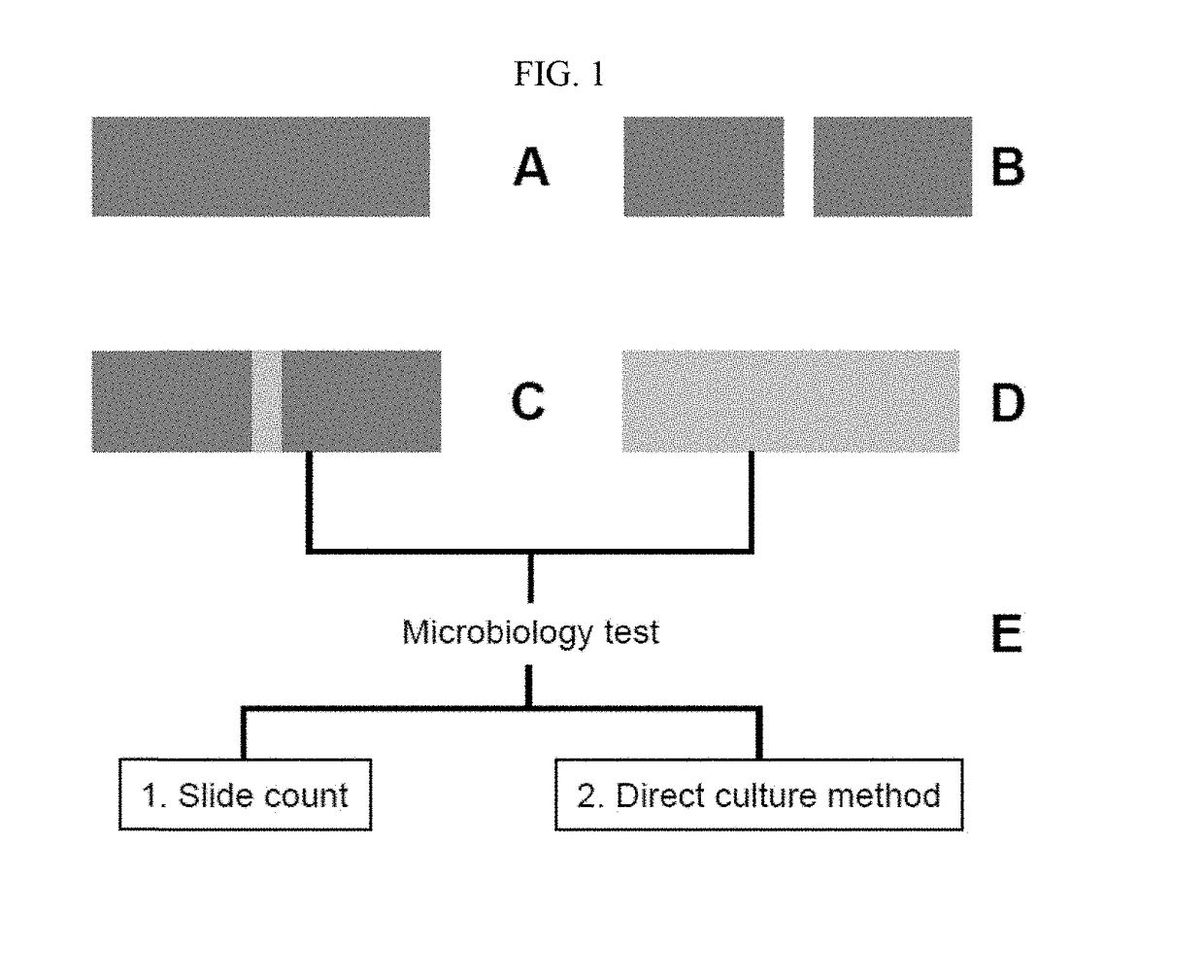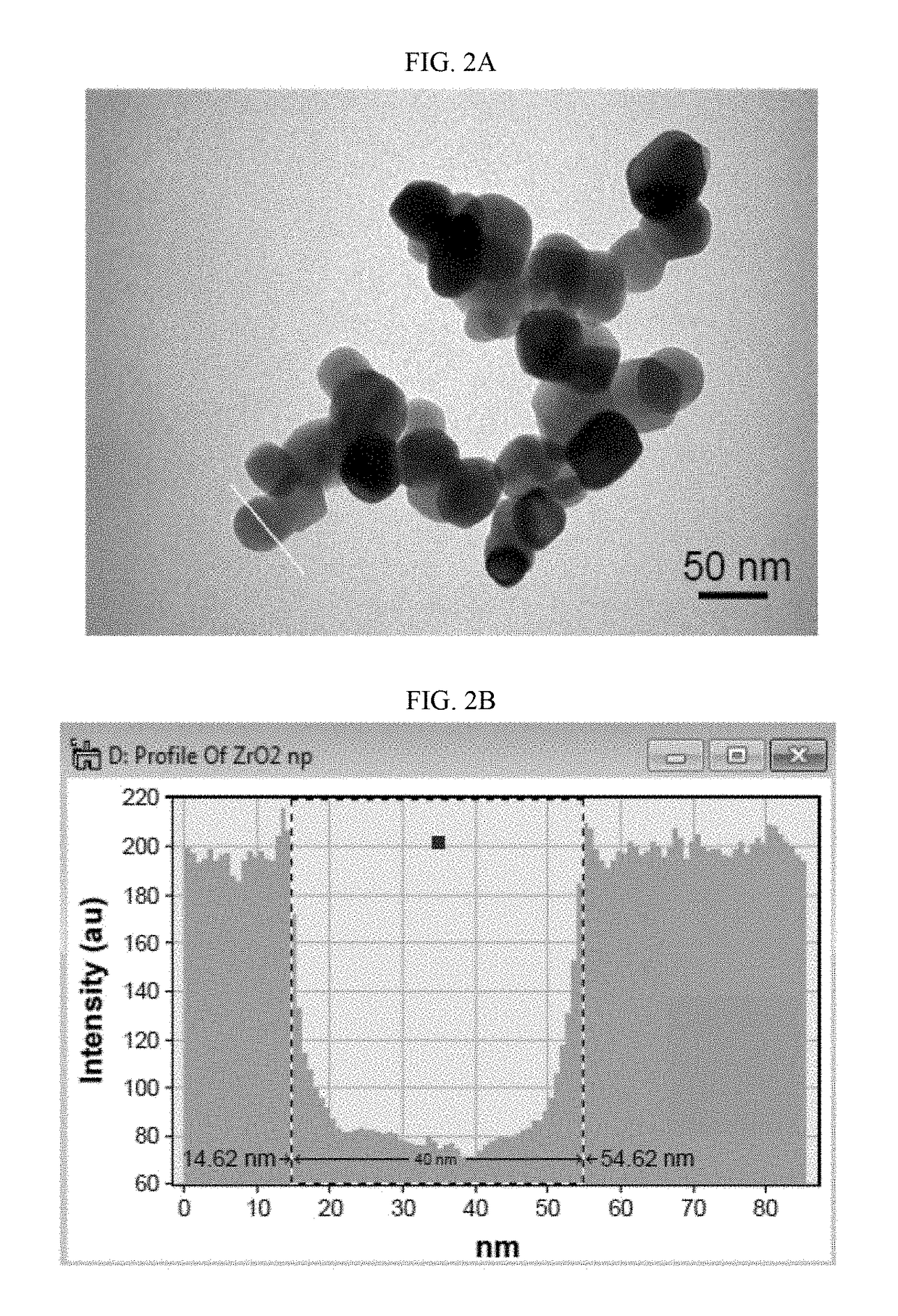Method of preventing or treating oral infections using zirconia autopolymerizable resins
a zirconia and autopolymer technology, applied in the direction of powdery paints, drug compositions, impression caps, etc., can solve the problems of denture stomatitis, surface scratches, debris accumulation, etc., and achieve the effect of preventing or treating an oral infection in a subject and reducing the adhesion of microorganisms
- Summary
- Abstract
- Description
- Claims
- Application Information
AI Technical Summary
Benefits of technology
Problems solved by technology
Method used
Image
Examples
example 1
Materials and Methods
[0095]The study was conducted using cold-cured acrylic resin as a repair material (repair group), which could affect the mechanical behavior of denture repair and its ability to provide antifungal activity, while the other intact cold-cured group was used for removable prosthesis fabrication. Therefore, from a clinical perspective, the results of the current study supported that nano-ZrO2-reinforced cold-cured acrylic resin could be used as a valuable treatment protocol in two ways: as a repair material and as a material used in the fabrication of removable interim dentures and orthodontic appliances.
i. Preparation of Heat-Polymerized Specimens
[0096]A total of 60 rectangular acrylic resin specimens were made using a metal mold with dimensions of 22×10×2.5 mm3 (FIG. 1). Specimens' wax-up (Cavex Set Up Wax; Cavex, Haarlem, the Netherlands) procedures were performed within the mold and invested using a dental stone (Fujirock E P; G C, Leuven, Belgium) within a flas...
example 2
Microbiology Test
[0100]i. Exposing Acrylic Specimens to C. Albicans
[0101]All specimens of acrylic plates were immersed in artificial saliva containing 2,000,000 cells of C. albicans (ATCC 10231) and then incubated for 48 hours at 37° C. After that, specimens were washed three times with phosphate-buffered saline, where the number of C. albicans proliferated and attached to the surface of the acrylic resin specimens and were subjected to the evaluation process.
ii. Evaluation
[0102]Two methods were used to calculate the number of living C. albicans adhering to the acrylic resin specimens after the following preparation: plates were incubated for 48 hours in a broth at 37° C. after washing each specimen with phosphate-buffered saline; they were then vibrated using a vortex, followed by tubes centrifuging with the plates to obtain a concentrated bullet of Candida. At this step, two methods of counting were used for each sample:
[0103]1. Slide count: each specimen was placed on a slide co...
example 3
Results
[0106]Prevention of DS could be achieved by preventing or at least reducing Candida adhesion to denture surfaces. Therefore, more research related to denture materials and focusing on ways to reduce the adhesion of biofilms is needed. Such research may be effective in decreasing yeast and bacterial colonization, which could assist in the potential reduction in DS. Many studies have investigated the role of modified denture surfaces in decreasing the adhesion of C. albicans and minimizing the formulation of biofilms on denture surfaces. Most of the previous studies concentrated on polishing and smoothing the different denture base materials and adding antimicrobial reinforcement material, such as nanosilver. However, the antibacterial impact of zirconia nanoparticles (nano-ZrO2) against C. albicans has not been well addressed. Therefore, the current study was conducted to assess the antifungal effect of nano-ZrO2 on the adhesion of C. albicans to acrylic resin denture bases re...
PUM
| Property | Measurement | Unit |
|---|---|---|
| size | aaaaa | aaaaa |
| pressure | aaaaa | aaaaa |
| temperature | aaaaa | aaaaa |
Abstract
Description
Claims
Application Information
 Login to View More
Login to View More - R&D
- Intellectual Property
- Life Sciences
- Materials
- Tech Scout
- Unparalleled Data Quality
- Higher Quality Content
- 60% Fewer Hallucinations
Browse by: Latest US Patents, China's latest patents, Technical Efficacy Thesaurus, Application Domain, Technology Topic, Popular Technical Reports.
© 2025 PatSnap. All rights reserved.Legal|Privacy policy|Modern Slavery Act Transparency Statement|Sitemap|About US| Contact US: help@patsnap.com



